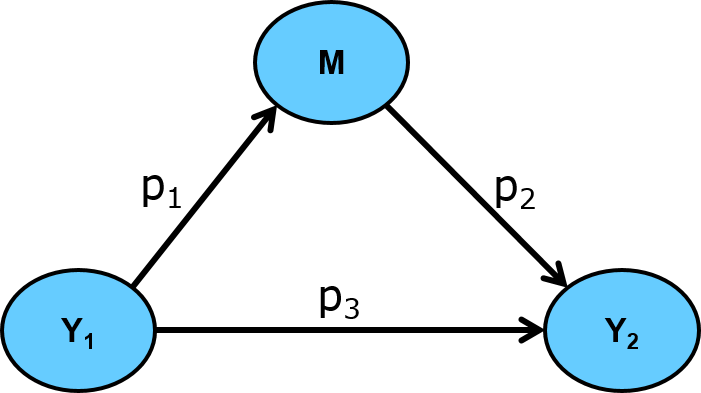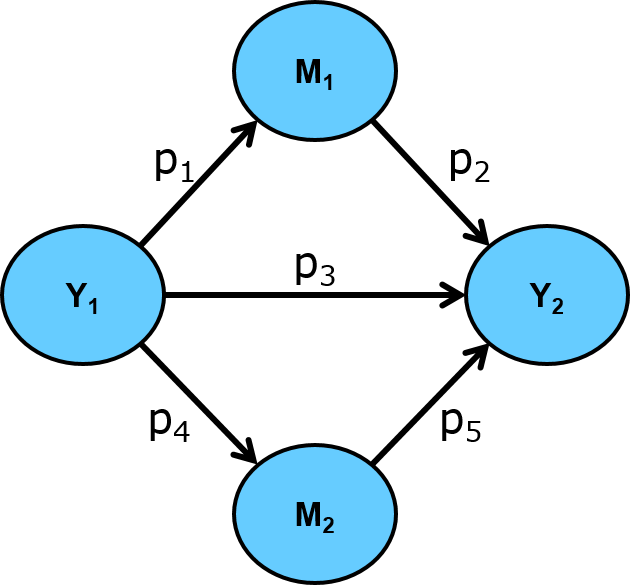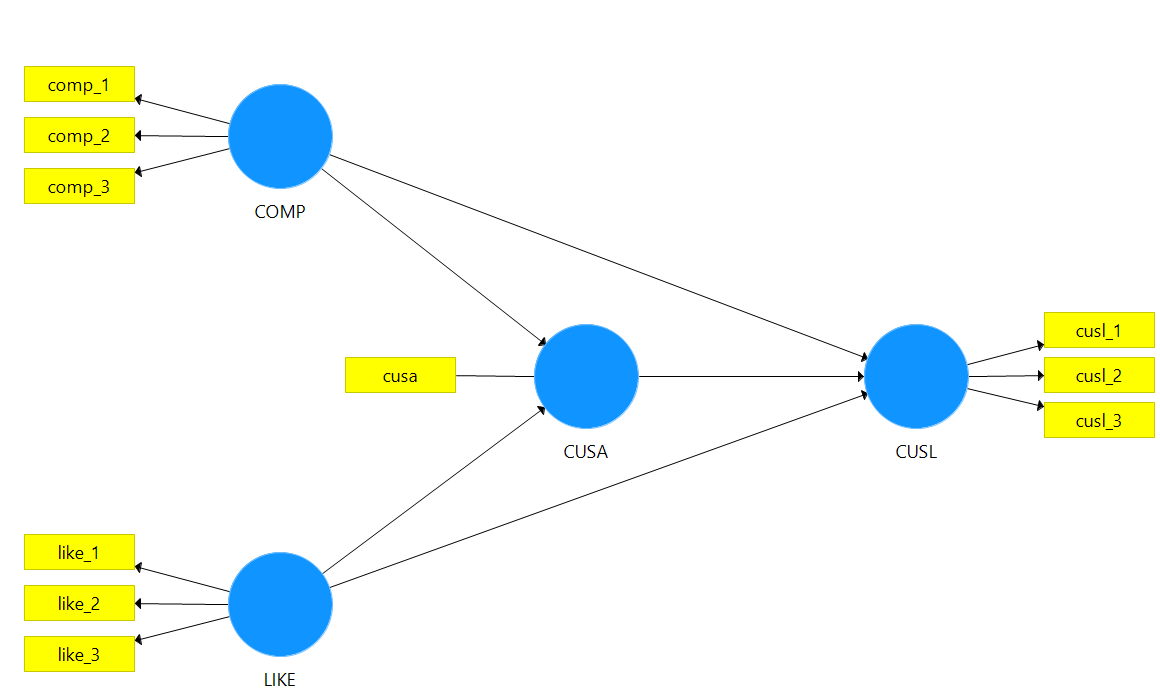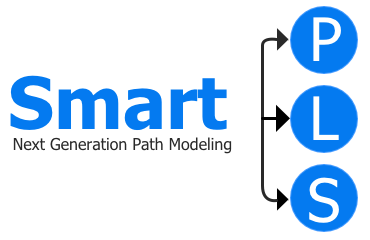Mediation
Mediation in PLS-SEM
Mediation occurs when a third mediator variable intervenes between two other related constructs. More precisely, a change in the exogenous construct causes a change in the mediator variable, which, in turn, results in a change in the endogenous construct in the PLS path model. Thereby, a mediator variable governs the nature (i.e., the underlying mechanism or process) of the relationship between two constructs.
Analyzing the strength of the mediator variable’s relationships with the other constructs allows substantiating the mechanisms that underlie the cause-effect relationship between an exogenous construct and an endogenous construct. In the simplest form, the analysis considers only one mediator variable, but the path model can include a multitude of mediator variables simultaneously (i.e., multiple mediator analysis).
Hair et al. (2017) describe the systematic mediator analysis process in PLS-SEM in more detail; also see Nitzl et al. (2016), Cepeda et al. (2017), and Memon et al. (2018).
The following figure shows the example of a simple mediator model, whereby is the direct effect, is the indirect effect, and the direct effect + the indirect effect = the total effect:

To analyze a mediator model, Zhao et al. (2010) suggest a model, as shown in the following figure, which Hair et al. (2017) also propose to use for PLS-SEM:

As a result, the researcher decides with regards to the indirect effect, if mediation and what kind of mediation occurs.
Researchers also can apply the model to situations with multiple mediators as shown in the following figure:

In this figure, constructs and mediate in parallel the relationship between constructs and . In case of an additional relationship from construct to in that figure, we would describe the situation as serial mediation (i.e, mediator follows ).
When considering multiple mediators, the researcher shall analyze the model that includes all relevant mediators at the same time (as, for example, shown in the above figure). For such a mediator model, one can use the before described analysis procedure as suggested by Hair et al. (2022) and Zhao et al. (2010). It also allows in a multi mediator model to analyze the total indirect effect for the total mediation via both mediators and . Alternatively, the researcher can use the procedure to analyze the specific indirect effects per mediator variable (i.e., for the mediator and for the mediator).
Mediation can also be combined with moderation in PLS-SEM in order to carry out a moderated mediation or conditional process analysis (Cheah et al., 2021; Hair et al. 2022; Sarstedt et al. 2020).
Mediation in SmartPLS
SmartPLS supports to model and analyze mediators. The following model shows the corporate reputation model example. CUSA mediates the relationships between COMP and CUSL as well as LIKE and CUSL.

In SmartPLS, the results of the PLS-SEM algorithm and the bootstrap procedure include the direct, the total indirect effect, the specific indirect effects, and the total effect. These outcomes, which are available in the SmartPLS results reports, permit conducting a mediator analysis (e.g., as suggested by Hair et al. 2017). Note that the SmartPLS results allow analyzing both single and multiple mediation models (i.e., parallel and serial mediation).
References
- Cepeda, G., Nitzl, C., and Roldán, J. L. (2017). Mediation Analyses in Partial Least Squares Structural Equation Modeling: Guidelines and Empirical Examples., in Partial Least Squares Path Modeling: Basic Concepts, Methodological Issues and Applications, H. Latan and R. Noonan (eds.), Springer: Cham, pp. 173-195.
- Cheah, J. H., Nitzl, C., Roldán, J. L., Cepeda Carrión, G., and Gudergan, S. P. (2021). A Primer on the Conditional Mediation Analysis in PLS-SEM. ACM SIGMIS Database: the DATABASE for Advances in Information Systems, 52, 43-100.
- Hair, J. F., Hult, G. T. M., Ringle, C. M., and Sarstedt, M. (2022). A Primer on Partial Least Squares Structural Equation Modeling (PLS-SEM) (3 ed.). Thousand Oaks, CA: Sage.
- Memon, M. A., Cheah, J.-H., Ramayah, T., Ting, H., and Chuah, F. (2018). Mediation Analysis: Issues and Recommendations. Journal of Applied Structural Equation Modeling, 2(1), i-ix.
- Nitzl, C., Roldán, J. L., and Cepeda Carrión, G. (2016). Mediation Analysis in Partial Least Squares Path Modeling: Helping Researchers Discuss More Sophisticated Models, Industrial Management & Data Systems, 119 (9), 1849-1864.
- Sarstedt, M., Hair, J. F., Nitzl, C., Ringle, C. M., and Howard, M. C. (2020). Beyond a Tandem Analysis of SEM and PROCESS: Use of PLS-SEM for Mediation Analyses!. International Journal of Market Research, 62(3), 288-299. https://doi.org/10.1177/1470785320915686
- Zhao, X., Lynch, J. G., and Chen, Q. (2010). Reconsidering Baron and Kenny: Myths and Truths About Mediation Analysis. Journal of Consumer Research, 37(2), 197-206.
- More literature ...
Cite correctly
Please always cite the use of SmartPLS!
Ringle, Christian M., Wende, Sven, & Becker, Jan-Michael. (2024). SmartPLS 4. Bönningstedt: SmartPLS. Retrieved from https://www.smartpls.com

